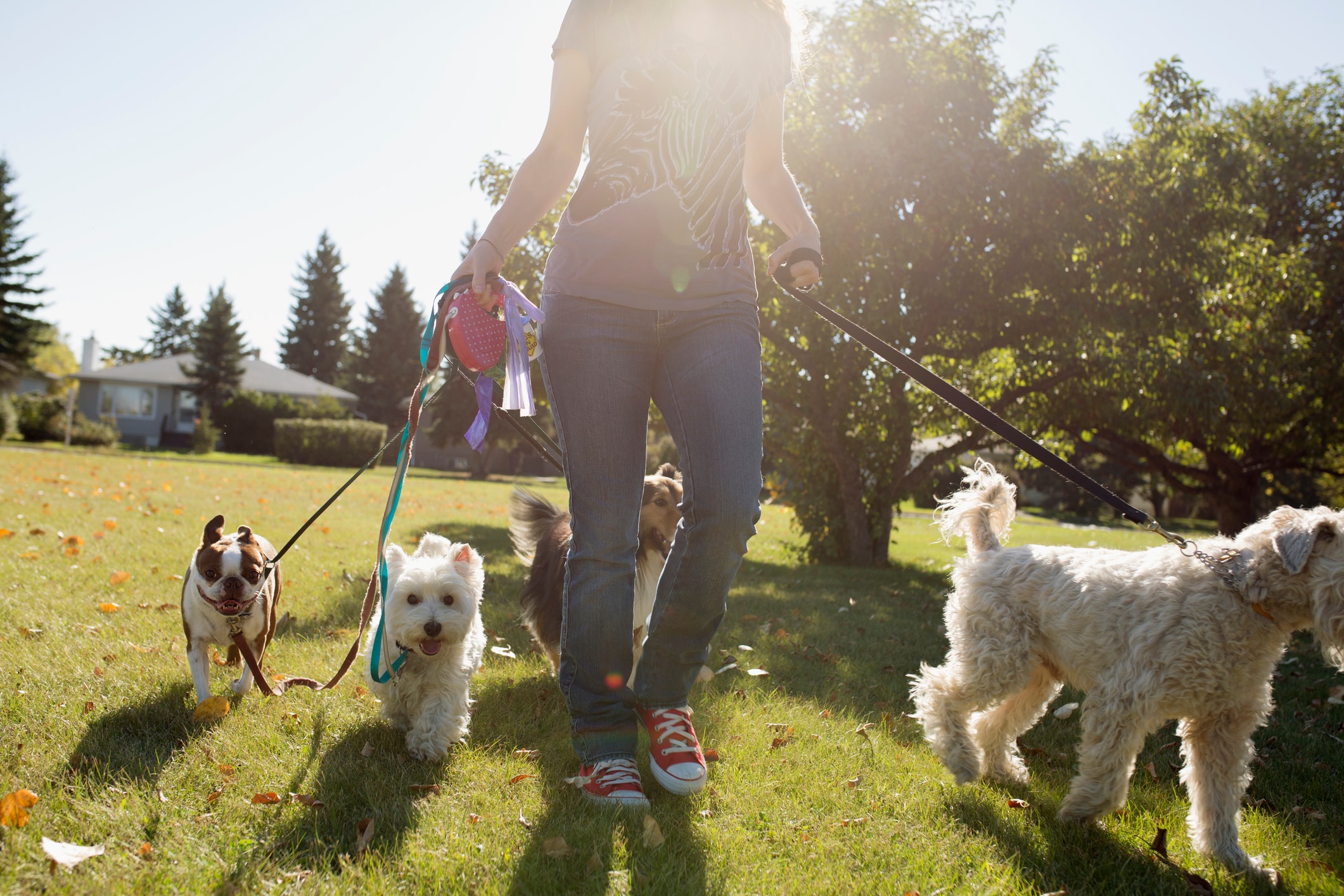Is your dog more sluggish than usual? You may have a diabetic dog. The first step toward your dog’s good health is a great relationship with your veterinarian. “Having someone you know and trust can make the stress of a chronic and potentially debilitating disease like diabetes much less stressful,” says Dr. Denise Petryk, the director of veterinary services at Trupanion.
In addition to getting professional help for your pup, there are things you can do at home.
Caring for a diabetic dog
According to Dr. Carol Osborne, an integrative veterinarian and director of the Chagrin Falls Pet Clinic in Chagrin Falls, Ohio, walking — and noticing how your dog is walking — is key in caring for a diabetic dog.
“If the dog is not walking in front of you, it’s time to come home, as this a sign that the dog is tired,” she says. “You should go home if your dog is wheezing, panting, limping or otherwise showing signs of exhaustion or discomfort.” Osborne also notes that it’s best to walk dogs early or late in the day when the heat is less intense — something that’s particularly important for diabetic dogs.
Here, more tips from both Petryk and Osborne:
- Feed your dog healthy and low-fat meals and treats.
There are many types of healthy food available for diabetic dogs. “Commercial brands, whether they are canned or dry, are generally low in fat,” says Osborne. But read the labels and look for low carb and high fiber.
- Bring on the broccoli.
Have you considered giving your dog vegetables? “Fresh vegetables make excellent diabetic dog treats,” says Osborne. Some healthy vegetables for dogs include: broccoli, cauliflower, string beans, and cucumber slices. Veggies can be given to your dog fresh, cooked or frozen.
- Avoid overfeeding.
Just like in humans, dog diabetes is best managed by portion control. Your dog may beg for more, but check with your vet on how much you should be feeding them (depends on size, age, activity level and breed).
- Time the meals appropriately.
You want to prevent your dog from having low glucose dips. By feeding them at the same time each day (and giving healthy treats between meals), you’re stabilizing their blood sugar levels, which keeps insulin dosage consistent (if they’re on insulin).
- Make sure your dog gets plenty of exercise.
Exercise, like food, helps maintain stable blood sugar levels and can affect insulin dosing. “The most important fact to remember is keeping daily exercise levels consistent,” says Osborne.
- Put your overweight dog on a diet.
“If you can’t easily feel each rib, the best gift you can offer your dog is weight loss,” says Osborne. The good news is that in some cases, weight loss eliminates the need for daily insulin injections and helps restore your dog’s good health. She suggests reducing the kibble by 50 percent and replacing it with fresh vegetables. Of course, you should talk to your vet before starting your dog on a diet.
- Watch out for table scraps.
Once your vet advises you on what you should — and shouldn’t — give your dog, communicate that to everyone, including dog walkers if you use one. “Be sure the whole family is on the same page when it comes to treats and table scraps,” says Petryk. Kids love to give dogs food from their plates, so make sure they know what’s OK (green beans) and what’s not (brownies).
- Find diabetic-specific food.
“There are currently several commercial dog brands that are specific to diabetes, which is very helpful if your diabetic dog is a picky eater,” says Petryk. Try weight control varieties from Royal Canin and Blue Buffalo. Smaller companies sell diabetic treats online, and Pinterest has recipes for the adventurous pet owner. Make sure to read labels and have your veterinarian weigh in (no pun intended!) to see what’s a good option.
- Look into pet insurance.
Diabetes can be very expensive. “If you have a young female dog of a breed that is predisposed to developing diabetes, like German shepherds, schnauzers, beagles, poodles and golden retrievers, you should think about getting pet insurance even before symptoms appear,” advises Petryk.
- Educate yourself.
“Know the signs of both low and high blood sugar,” says Petryk. Talk to your vet about what to do when you see signs of either condition. Also, watch your dog for any changes in urine color or frequency.





